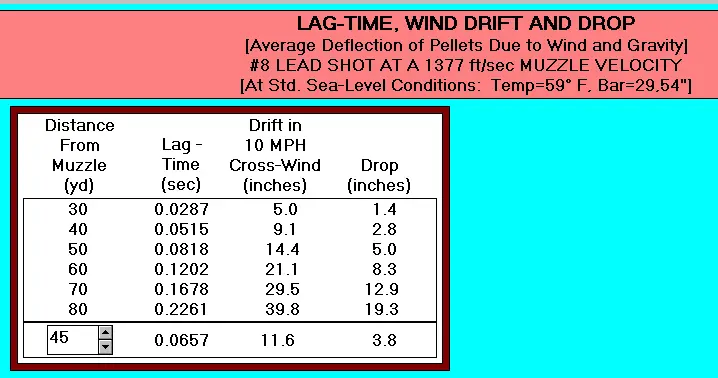Confused about Shotgun Point of Impact?
Well, don't be. There are endless references to 60/40, 70/30, 50/50, but that is really the long way home. It is far simpler than that. Take a look at the following reference chart courtesy of Browning at Arnold, Missouri.

It is just that simple. If the center of your pattern is 1-1/2 inches high, it is a 55 / 45 pattern, 3 inches = 60/40. For every 1-1/2 inches in height at 40 yards, another 5% of the pattern is above your point of aim. This continues all the way until you are 15 inches high at 45 yards, which results in a 100 / 0 pattern.
Shotgun P.O.I. Testing Procedure
All POI testing is done in test tunnels at 40 yards. The only exception to the 40 yard test would be the .410. By industry standard the .410 is tested at 25 yards. All guns are shot from a shooting bench using a front and rear rest much the same as what a bench rest shooter would use. A sheet of paper approximately 5 feet square is used with a center aiming point of 6 inches.
The shooter will use the sight picture appropriate for the type of shotgun being tested. A flat sight picture is used for Field, Skeet and Sporting Clays and a Figure 8 or stacked bead picture for Trap Guns. In all cases a 6 o’clock front sight hold on the target is used. 6 o’clock hold means sight bead held at the 6 o’clock position on the aim point.
The target is shot 3 times, the same as one would do to shoot a 3 shot group with a rifle. The purpose of the 3 shots is to give a denser pattern to work with. After 3 shots the pattern paper is recovered and a template 30 inches in diameter with a center hole is placed on the pattern and moved around to cover the most shot and the center marked. Removing the template, the shooter will measure from the center of the pattern to the center of the aiming point; up, down, right or left.
With these measurements one can determine where the center of the pattern is in relationship to the aiming point.

The above Ed Lowry external ballistics chart shows why shooting outdoors, even with very light wind, can be misleading. A minimal, 5 mph X-wind @ 40 yards can move your pattern over 4-1/2 inches.
Copyright 2015-2017 by Randy Wakeman. All Rights Reserved.











